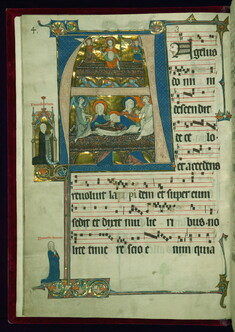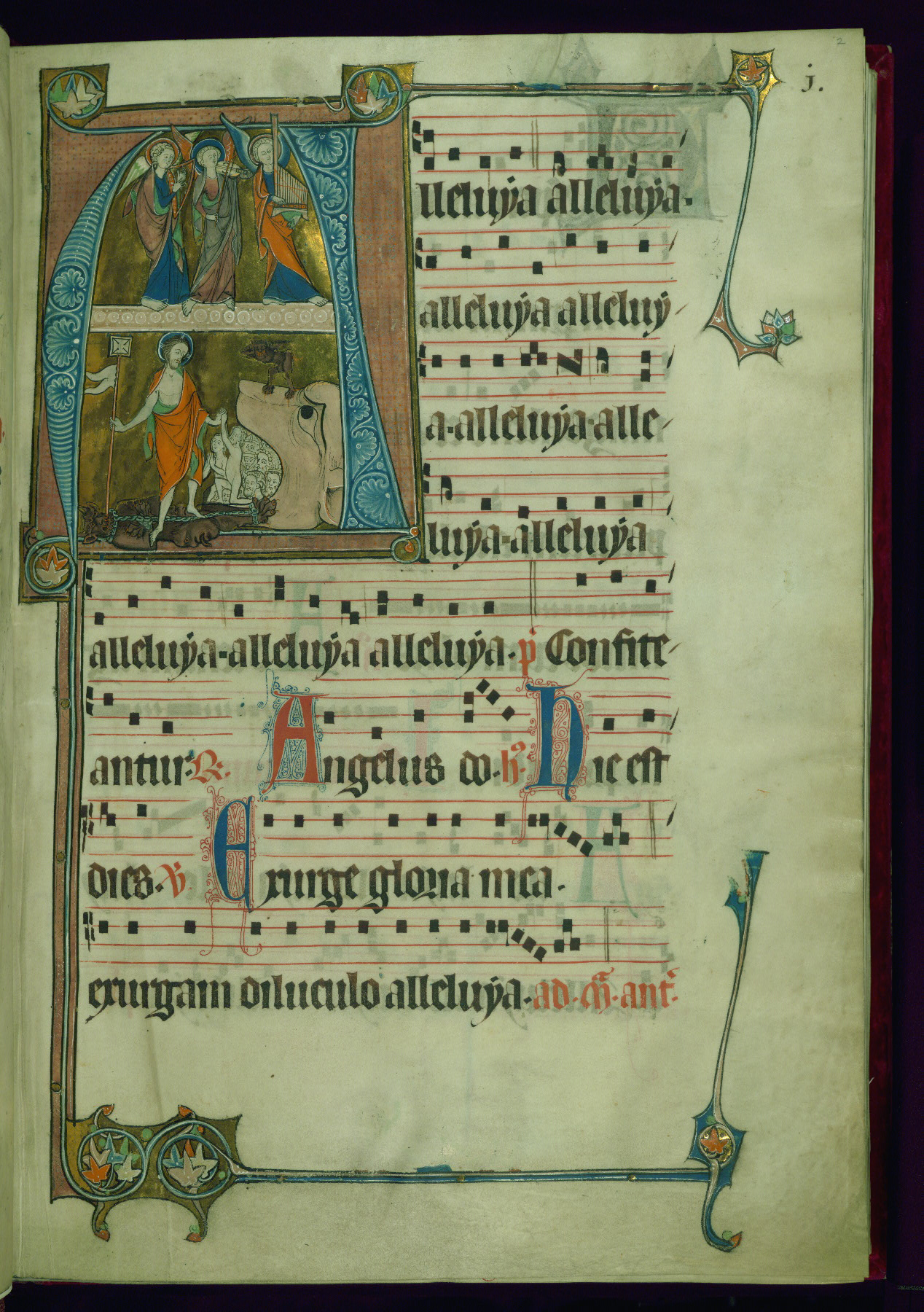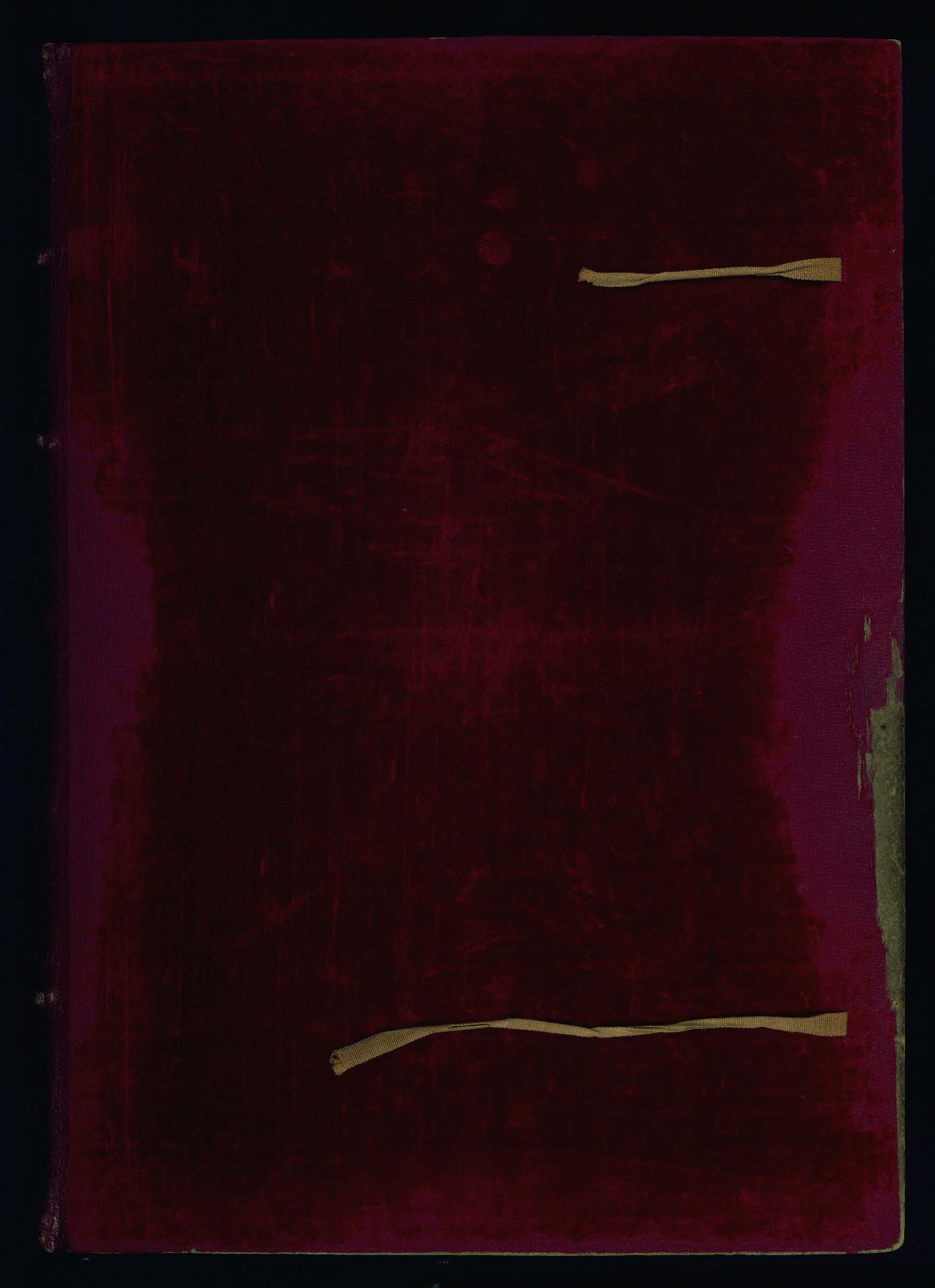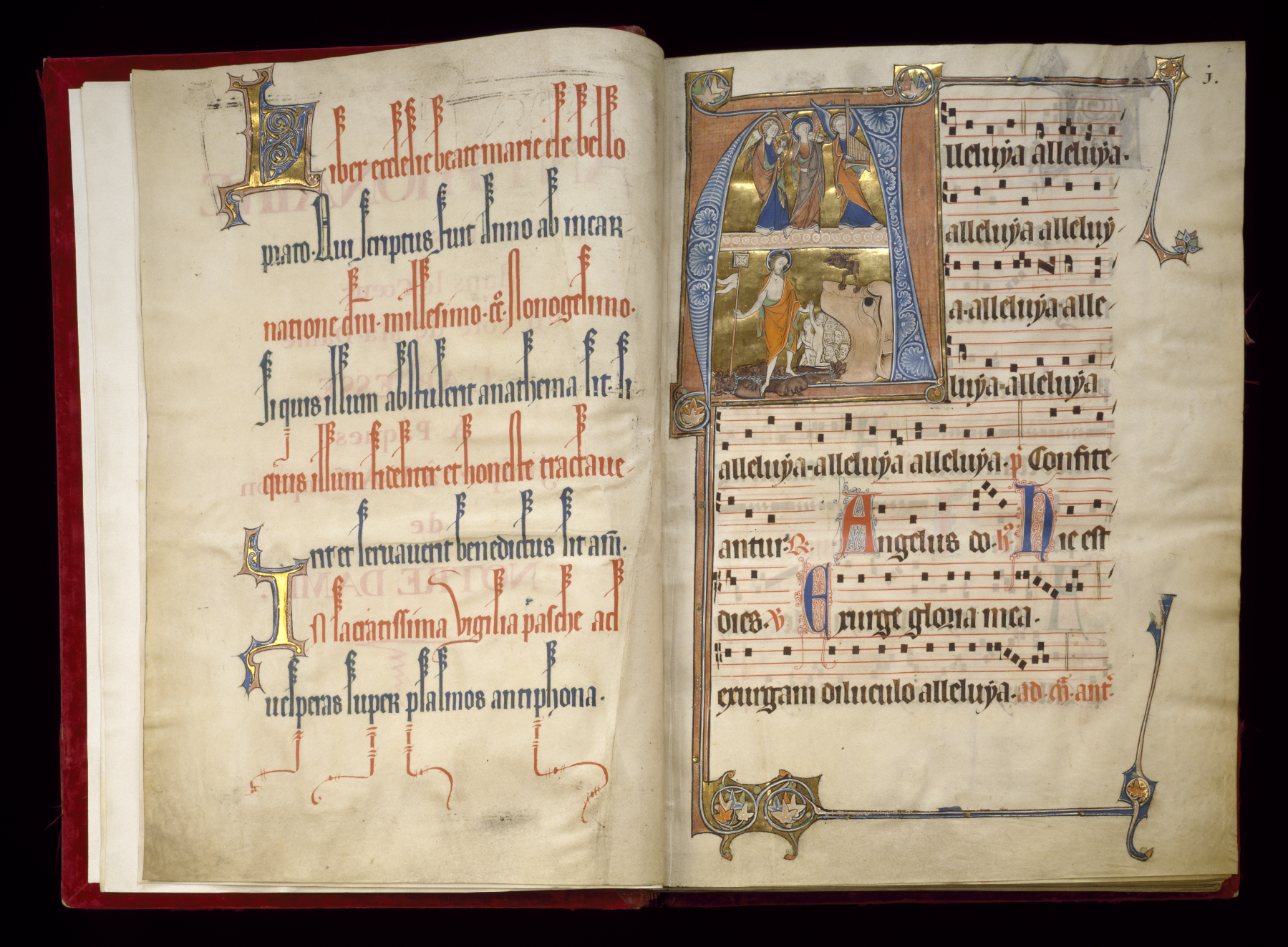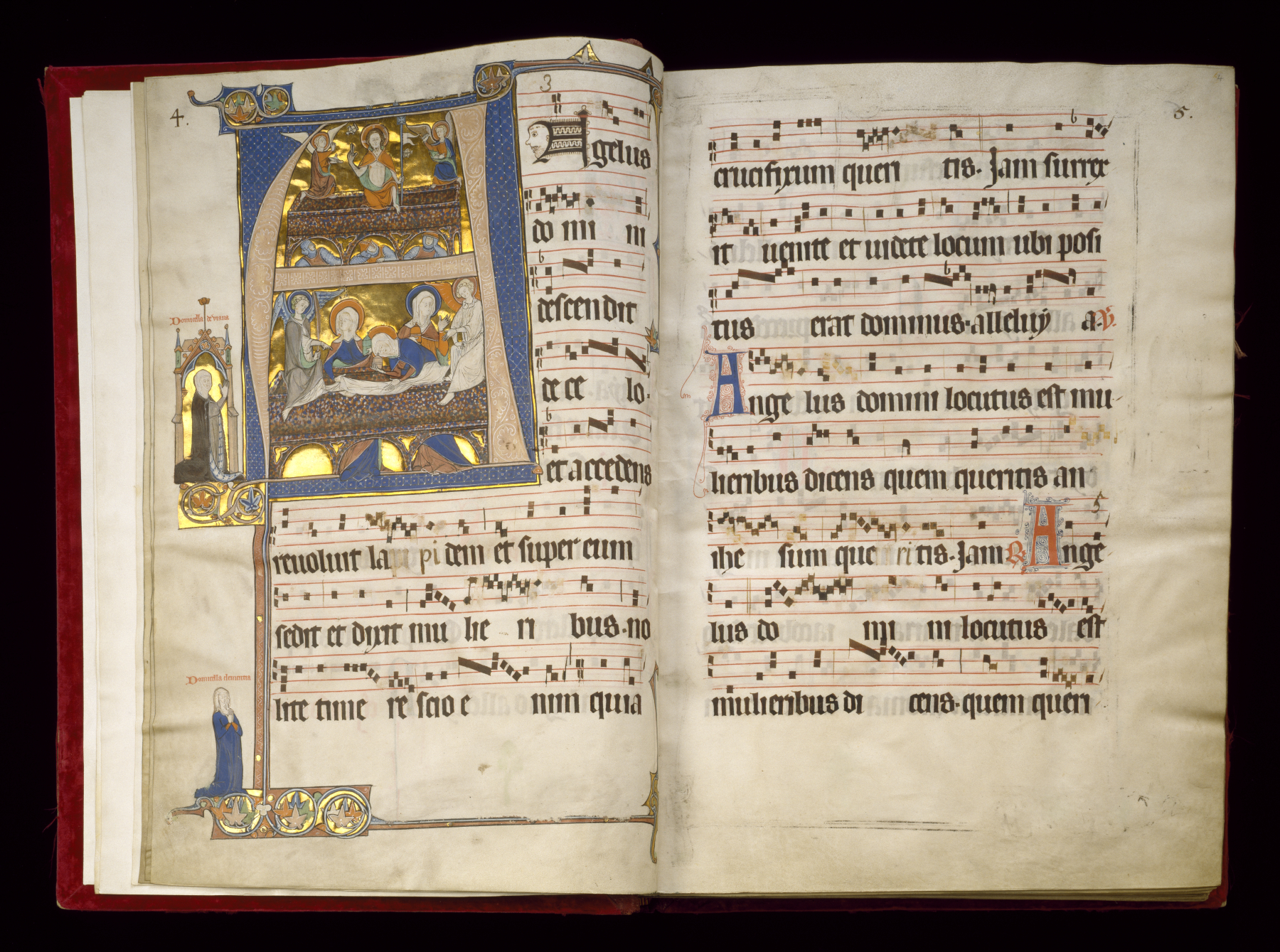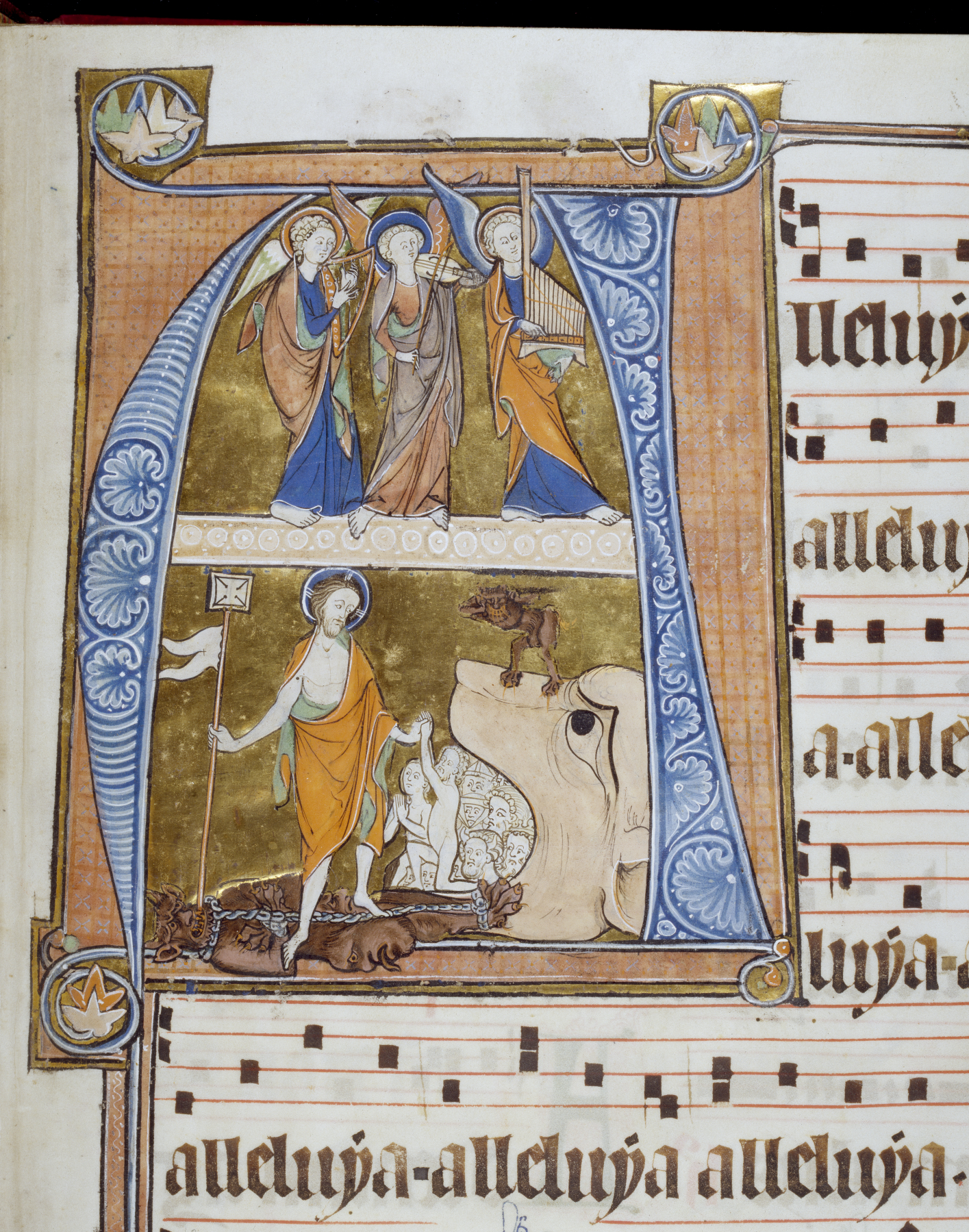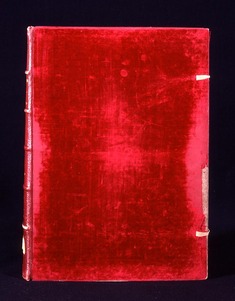The Beaupré Antiphonary (Volume I)
(Manuscripts and Rare Books, Medieval Europe )
Illuminated in Hainaut ca. 1280 and completed in 1290, this collection of richly illuminated Cistercian manuscripts is a rare example of those being produced in Flanders at the end of the thirteenth century. Eighteen extant large historiated initials, flourished and decorated initials, and an abundance of amusing drolleries facilitate a liturgical narrative within the text. However, additions and removals within the text and imagery tells much about the use and history of the manuscript. The liturgical contents of this volume provide musical settings from Easter to the Assumption of the Virgin. This manuscript is the first of a set of three volumes destined for use on the abbess’ side of the choir at the Cistercian abbey of Sainte-Marie at Beaupré (diocese of Cambrai). Two sets of antiphonaries, each composed of three volumes, were originally created for the abbess and prioress of Beaupre. Of these two sets, the Walters Art Museum houses three volumes: two volumes from the set intended for the abbess and one volume from the set designated for the prioress. A fourth associated volume was created later to supplement W.759. The manuscripts' patroness, from the de Viane family, is depicted with a younger woman named Clementia on fol. 3v of vol. 1 (W.759). Donations by members of the de Viane family to Sainte-Marie of Beaupré were recorded from 1244 to 1293. Some of the marginal imagery was erased, possibly by John Ruskin, who owned them in the mid nineteenth century. Truly a remarkable work, this multi-volume antiphonary was generously gifted to the Walters Art Museum in 1957 at the bequest of the Hearst Foundation.
Provenance
Provenance (from the French provenir, 'to come from/forth') is the chronology of the ownership, custody, or location of a historical object.
Lady Marie de Viane at Cambron, 1290, by commission; First daughter of Lady Marie de Viane at Cambron [date of acquisition unknown], by gift; Convent of Saint Marie de Beaupré near Grammont, Belgium, until the French Revolution [mode of acquisition unknown]; John Ruskin, ca, 1853 [mode of acquisition unknown]; Sale, London (?), June 22, 1921, III, no. 67; Henry Yates Thompson, London [date and mode of acquisition unknown]; Sale, June 7, 1932, I, no. 15; A. Chester Beatty [date and mode of acquisition unknown]; William Randolph Hearst [date and mode of acquisition unknown]; William Randolph Hearst Foundation [date and mode of acquisition unknown]; Walters Art Museum, 1957, by gift.
Exhibitions
| 2014 | Seeing Music in Medieval Manuscripts. The Walters Art Museum, Baltimore. |
| 2009-2010 | The Christmas Story: Picturing the Birth of Christ in Medieval Manuscripts. The Walters Art Museum, Baltimore. |
| 2008-2009 | Hearst the Collector. Los Angeles County Museum of Art, Los Angeles. |
| 2002 | Medieval Mastery, Book Illumination from Charlemagne to Charles the Bold (Meesterlijke Middeleeuwen). Stedelijik Museum Vander Kelen-Mertens, Leuven. |
| 1988-1989 | Making Music in Medieval Manuscripts. The Walters Art Gallery, Baltimore. |
| 1986-1987 | Puer Natus Est : The Christmas Story in Medieval Manuscripts. The Walters Art Gallery, Baltimore. |
| 1987 | Real People in the Middle Ages: Donor Portraits in Illuminated Manuscripts. The Walters Art Gallery, Baltimore. |
| 1987 | Death and Dying in the Middle Ages. The Walters Art Gallery, Baltimore. |
| 1985-1986 | Saints and Their Symbols. The Walters Art Gallery, Baltimore. |
| 1984-1985 | Illuminated Manuscripts: Masterpieces in Miniature. The Walters Art Gallery, Baltimore. |
| 1980 | Undercover Stories in Art. The Walters Art Gallery, Baltimore. |
Conservation
| Date | Description | Narrative |
|---|---|---|
| 11/27/1985 | Treatment | stabilized |
| 12/6/2013 | Treatment | binding stabilized; examined for digitization; media consolidation; splits mended |
Geographies
Belgium, Hainaut (Place of Origin)
Measurements
Folio H: 18 15/16 x W: 13 5/8 in. (48.1 x 34.6 cm)
Credit Line
Gift of the William R. Hearst Foundation, 1957
Location in Museum
Not on view
Accession Number
In libraries, galleries, museums, and archives, an accession number is a unique identifier assigned to each object in the collection.
In libraries, galleries, museums, and archives, an accession number is a unique identifier assigned to each object in the collection.
W.759
Do you have additional information?
Related Objects
